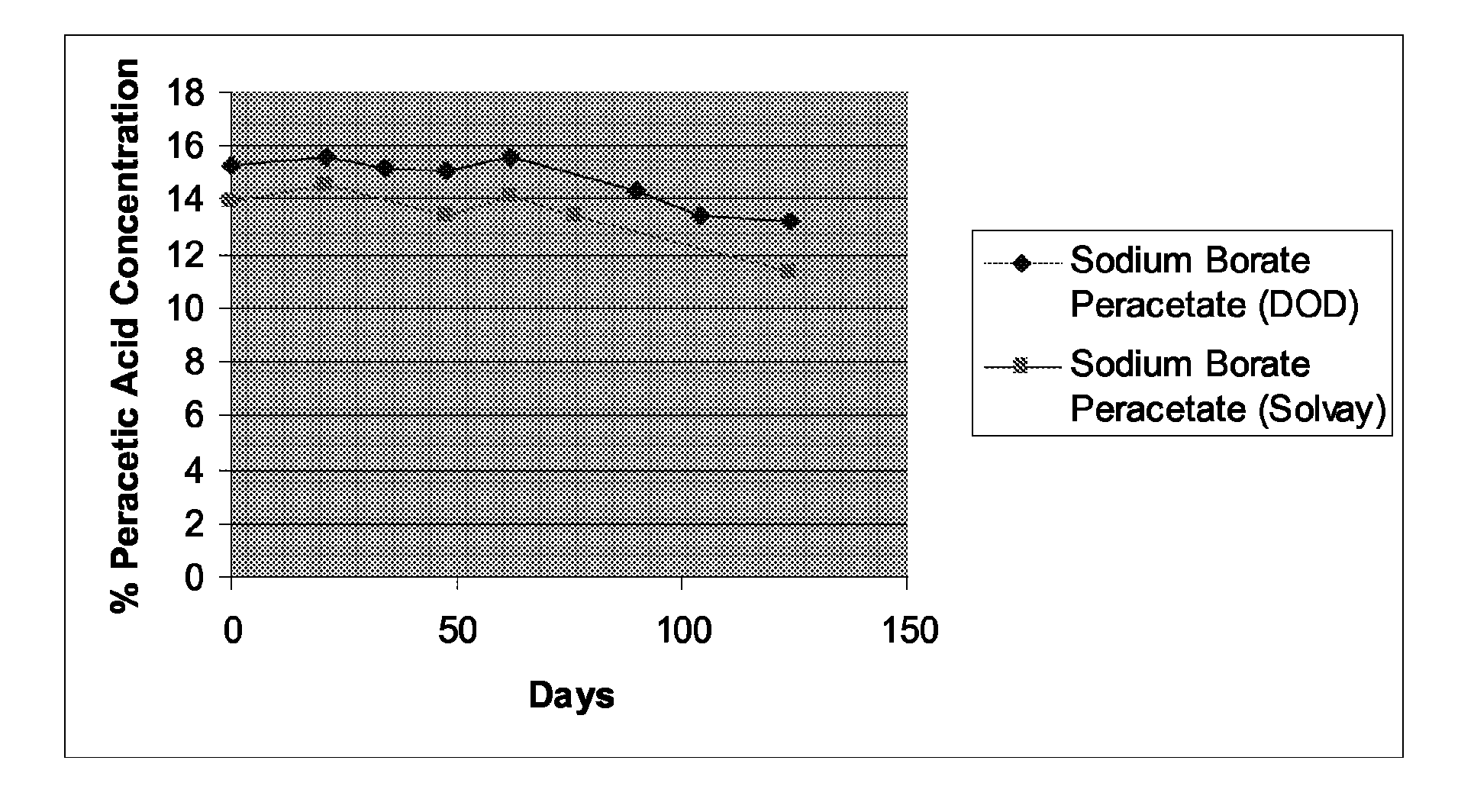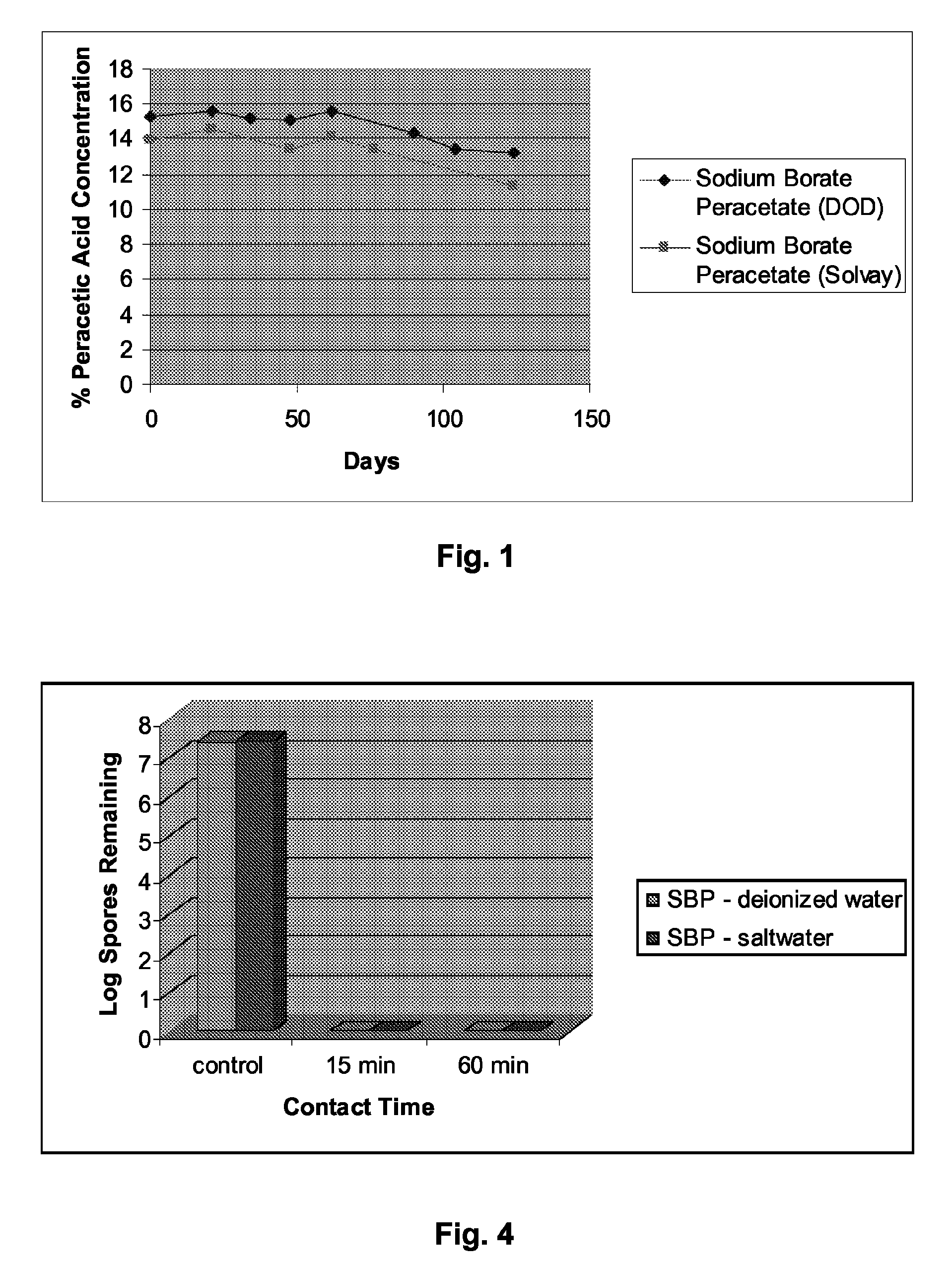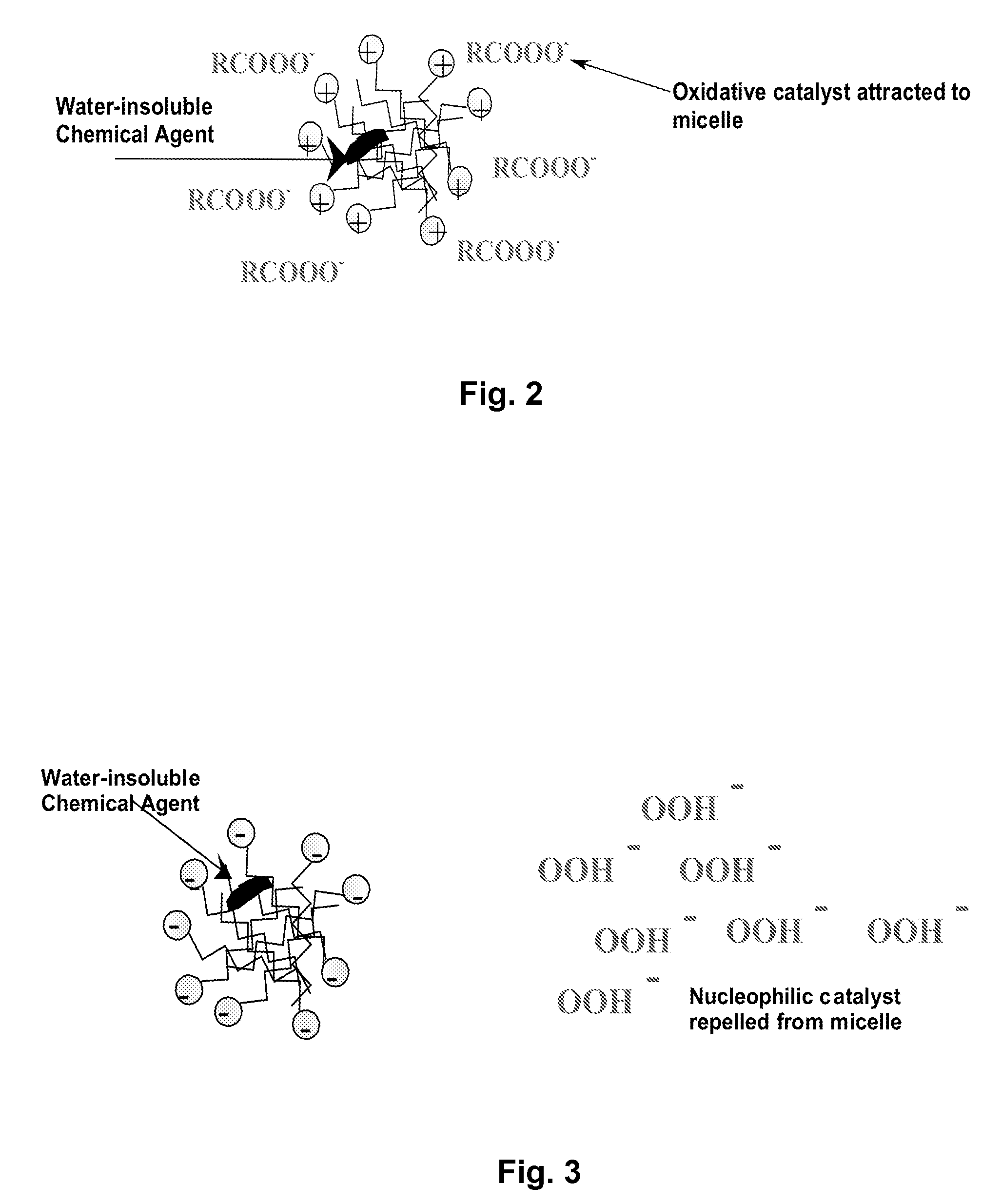Reduced weight decontamination formulation utilizing a solid peracid compound for neutralization of chemical and biological warfare agents
a technology of chemical and biological warfare agents and peracid compounds, which is applied in the direction of detergent compounding agents, biocide, other chemical processes, etc., can solve the problems of significant logistics burden and difficulty in developing a reduced weight configuration of df-200 (i.e., a ‘dry’ formulation) and achieves the effect of reducing the logistics burden of warfighters, reducing weight, and reducing the packaging weight of decontamination formulations
- Summary
- Abstract
- Description
- Claims
- Application Information
AI Technical Summary
Benefits of technology
Problems solved by technology
Method used
Image
Examples
example # 1
EXAMPLE #1
Part A (Sodium Borate Peracetate)
[0059]40 g Solid Sodium Borate Peracetate
Part B (Surfactant Buffering Foam Stabilizing and Drying Ingredients)[0060]11 g Dodecyltrimethylammonium Chloride[0061]4 g Tripropylene Glycol Methyl Ether[0062]2 g 1-Dodecanol[0063]10 g Potassium Bicarbonate[0064]30 g Potassium Carbonate[0065]20 g Sorbitol (Sorbigem™ Fines)
Part C (Makeup Water)[0066]500 g Water (Freshwater or Saltwater).[0067]Total=617 grams.
To prepare Part B, use the following method:[0068]1. Add Tripropylene glycol methyl ether to an empty vessel.[0069]2. Add dodecyltrimethylammonium chloride. Stir until dispersed throughout liquid and all lumps are dissolved.[0070]3. Add 1-dodecanol. Stir (a paste will form).[0071]4. Add sorbitol and stir.[0072]5. Add potassium bicarbonate and potassium carbonate. A free flowing powder will result.
To prepare the formulation, use the following method.[0073]1. Add Part C (makeup water) to an empty vessel.[0074]2. Add Part A. Stir vigorously until d...
example # 2
EXAMPLE #2
Part A (Sodium Borate Peracetate)
[0078]6.5 wt % Solid Sodium Borate Peracetate
Part B (Surfactant, Buffering, Foam Stabilizing, and Drying Ingredients)[0079]1.8 wt % Dodecyltrimethylammonium Chloride[0080]0.6 wt % Tripropylene Glycol Methyl Ether[0081]0.3 wt % 1-Dodecanol[0082]1.6 wt % Potassium Bicarbonate[0083]4.9 wt % Potassium Carbonate[0084]3.3 wt % Sorbitol (Sorbigem™ Fines)
Part C (Makeup Water)[0085]81.0 wt % Water (Freshwater or Saltwater)[0086]Total=100%
[0087]Reduced weight DF-200 formulations can be packaged, stored, and transported to the point of use in the form of a two-part kit (i.e., Parts A and B, each packaged separately in individual containers). Then, at the point of use, the makeup water (Part C) is added.
[0088]Alternatively, the two pre-packaged dry parts (A and B) can be pre-mixed together to form a single dry mixture, however the storage stability may be reduced due to some interaction between the ingredients. This would not be a problem for some appl...
example # 3
EXAMPLE #3
Part A (Sodium Borate Peracetate)
[0090]5-40 g Solid Sodium Borate Peracetate
Part B (Surfactant, Buffering, Foam Stabilizing, and Drying Ingredients)[0091]1-11 g Dodecyltrimethylammonium Chloride[0092]0-4 g Tripropylene Glycol Methyl Ether[0093]0-2 g 1-Dodecanol[0094]5-40 g Potassium Bicarbonate[0095]5-40 g Potassium Carbonate[0096]0-20 g Sorbitol (Sorbigem™ Fines)
Part C (Makeup Water)[0097]500 g Water (Freshwater or Saltwater)
[0098]Example # 4 has the same ingredients as in Example #3, with the concentration shown in weight percentage (wt %) amounts:
PUM
| Property | Measurement | Unit |
|---|---|---|
| concentrations | aaaaa | aaaaa |
| pH | aaaaa | aaaaa |
| Weight | aaaaa | aaaaa |
Abstract
Description
Claims
Application Information
 Login to View More
Login to View More - R&D
- Intellectual Property
- Life Sciences
- Materials
- Tech Scout
- Unparalleled Data Quality
- Higher Quality Content
- 60% Fewer Hallucinations
Browse by: Latest US Patents, China's latest patents, Technical Efficacy Thesaurus, Application Domain, Technology Topic, Popular Technical Reports.
© 2025 PatSnap. All rights reserved.Legal|Privacy policy|Modern Slavery Act Transparency Statement|Sitemap|About US| Contact US: help@patsnap.com



